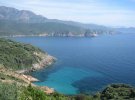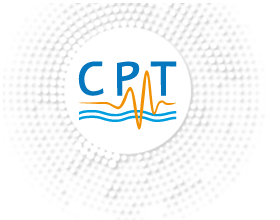Agenda
Jeudi 9 mai 2019
Hot topics in Modern Cosmology Spontaneous Workshop XIII

Spontaneous Workshop (SW) brings together specialists on recent insights in Particle Physics, Astrophysics and Cosmology. The aim is to stimulate debate on common topics in views of providing us with innovating ideas on emerging problems. The workshop’s organization is based on an optimal number of concise presentations and with enough space for discussions in order to favour interactions among participants. Postdocs and PhD students are encouraged to attend.
Numerical simulation of dry foam and biological tissues.
Francesca Zaccagnino (Aberystwyth University, UK)
We present a numerical model to study the rheology of two-dimensional dry foams. In a foam flowing at high velocity, the tangential component of the velocity associated with the gradient of surfactant concentration is not negligible. We develop a non quasi-static model to investigate the influence of viscoelastic parameters on the film evolution. In particular, we consider the surfactant transport and the resulting surface tension variation along each film. Since, experiments on a foam between two parallel plates suggest that the diffusion of curvature along the film can not be neglected, we merge our surfactant transport (ST) model with the two-dimensional Viscous Froth (VF) model[1]. The VF+ST model is validated by fitting experimental data for the evolution of the length of a film after a topological rearrangement (T1). Extending the VF model, which allows us to estimate the drag coefficient, our VF+ST model predicts two additional parameters, the Gibbs elasticity and the surface viscosity. The VF+ST model allow us to fit experimental data for foams containing either anionic surfactants or proteins [2].
Furthermore, we apply the VF+ST model to predict the rheological parameters of a flowing two-dimensional dry foam. We implement hexagonal ordered and disordered foams subjected to simple shear or oscillating strain. We highlight how the viscoelastic parameters of our model affect the distribution of topological rearrangements in the foam. Additionally, we calculate the shear stress, which offers a qualitative description of the transition of the foam from a solid-like to a liquid-like behaviour. Hence, starting from the stress-strain curves at different shear rates we predict the elastic shear modulus and the yield stress of the foam. In the case of oscillating strain we investigate how the foam behaviour depends on the frequency or the amplitude of the applied strain and we calculate the storage and loss moduli. Overall, we analyse the effect of the viscoelastic parameters of our model on the rheological properties of a foam.
Finally, the model is applied to investigate the morphology of biological tissues. Well known analogies between fluids and biological tissue make possible the application our model to simulate experiments presented by Bonnet et al[3]. They carried out an annular ablation on Drosophilapupa dorsal thorax epithelium. In agreement with the experimental results, we find that after severing the cells, the anisotropy in the tissue increases with the age of the Drosophilapupa. In the simulation the ageing of the tissue is implemented by applying an initial pre-strain. As before, we investigate the effect of our viscoelastic parameters on the tissue. We propose our model as a tool for further investigations on tissue morphology.
References
[1] Kern, N., Weaire, D., Martin, A., Hutzler, S., and Cox, S. J.,Two-dimensional viscous froth model for foam dynamics, Physical Review E, 70(4), 041411, (2004).
[2] Zaccagnino, F., Audebert, A. and Cox, S. J.,Simulation of surfactant transport during the rheological relaxation of two-dimensional dry foams, Physical Review E, 98(2), 022801, (2018).
[3] Bonnet, I., Marcq, P., Bosveld, F., Fetler, L., Bellaıche, Y., and Graner, F., Mechanical state, material properties and continuous description of an epithelial tissue, Journal of The RoyalSociety Interface, 9(75), 2614-2623, (2012)
